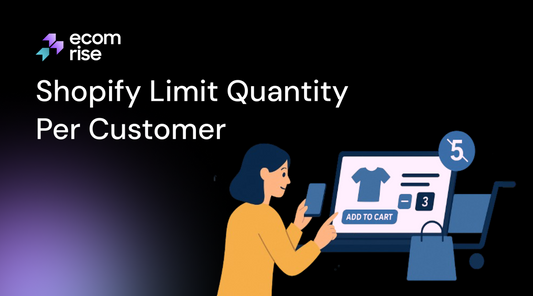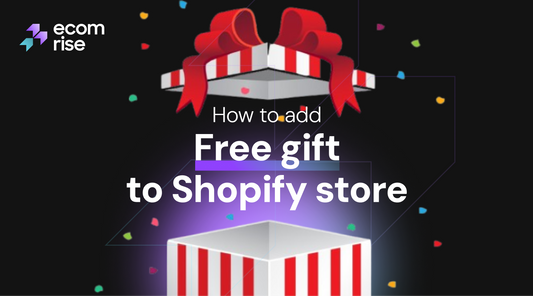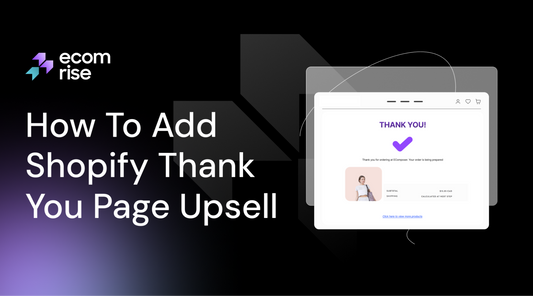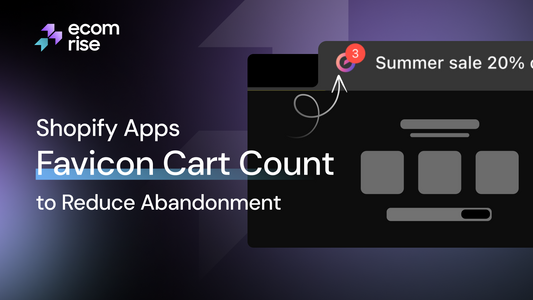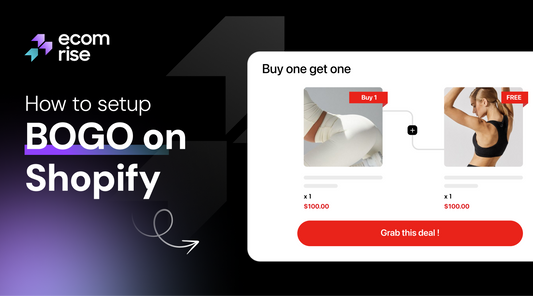8 Best Shopify Minimum Order Quantity Apps to Increase AOV
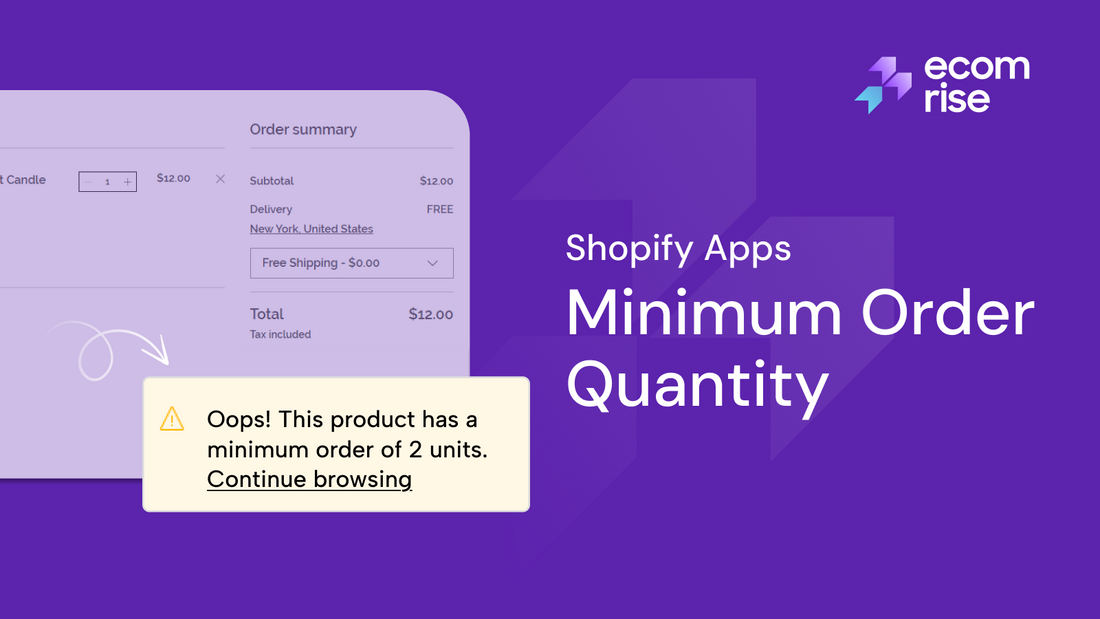
Top Shopify minimum order quantity apps include OC Quantity Breaks Order Limit (flexible rules and tiered discounts), MultiVariants (mix-and-match bulk ordering), and Avada Order Limits (full control with customer-specific settings). Other strong contenders are Minmaxify (lightweight, cart-wide rules) and Blockify (checkout customization with fraud control).
If you’re running a Shopify store, you’ve probably noticed that some customers check out with just one small item, leaving your average order value (AOV) lower than you’d like. That’s where Minimum Order Quantity (MOQ) apps come in because these tools let you set rules so shoppers buy more, boosting both sales and efficiency.
In this blog, we’ll explore the best Minimum Order Quantity apps to help you increase revenue while keeping customers happy. This blog will review real experiences of using MOQ features, pricing, ratings, and feedback from other merchants.
Why set a Minimum Order Quantity in Shopify?

(Image source: Avada)
Shopify stores set a Minimum Order Quantity (MOQ) to increase average order value, manage inventory more effectively, and improve profit margins by ensuring each order covers fixed costs like packaging, shipping, and production. MOQs streamline operations, reduce per-unit shipping and production costs, and help clear seasonal or slow-moving stock, ultimately leading to greater business profitability by encouraging larger purchases.
1. Increase average order value (AOV): The most obvious benefit is higher sales per order because shoppers naturally add more items to their cart, which directly boosts your AOV when you set an MOQ. If you sell low-cost products where single-item orders are not profitable, this is especially useful.
2. Cover costs and protect margins: Every order comes with packaging, shipping, and handling costs. Without an MOQ, you may end up spending more on fulfillment than you earn. A minimum ensures each order is worth your time and cost.
3. Streamline operations: When customers buy in larger quantities, you process fewer small orders. That saves time for your team, reduces shipping trips, and makes inventory planning easier.
4. Encourage bulk buying for certain niches: For wholesale, B2B, or consumable products (like supplements, cosmetics, or stationery), an MOQ sets clear expectations. Customers know upfront that your store focuses on bundles or larger orders.
In short, MOQ is about making your store more sustainable, profitable, and efficient. Done right, it creates a win-win: customers get more value, and you maximize each sale.
Haven’t had a Shopify account yet? Take full advantage of Shopify's $1 deal and explore all its plans from A to Z in your first 3 months!
Core features to look for in an MOQ App
Over the years, I’ve tested different MOQ (Minimum Order Quantity) apps, and not all of them are created equal. Key features to look for in a Shopify MOQ app include customizable MOQ rules for specific products or customers, clear visual communication on product pages and at checkout, flexible application of MOQs, seamless integration with your Shopify store's theme, real-time notifications for customers, and robust analytics to track performance and understand customer behavior:
- Customizable rules: A good app should let you set different minimums for products, collections, or even specific customer groups. This flexibility is crucial if you sell both retail and wholesale.
- Clear communication: MOQ rules work best when customers see them upfront. I always look for apps that display minimums on product pages, announcement bars, and checkout alerts. This way, shoppers are never surprised.
- Seamless integration: The app should blend with your Shopify theme so the design feels natural. It also needs to be mobile-friendly because most customers shop on their phones.
- Advanced tools: Analytics are very useful. The ability to track how MOQ impacts sales and customer behavior helps fine-tune strategy. By keeping shoppers informed at every stage, automated notifications are another plus. Some apps even add incentives like discounts for larger orders.
- Practical considerations: Performance matters. A well-optimized app should not slow your store down. Solid customer support is another must, especially during setup. And of course, pricing should make sense for the features you actually need.
In short, the right MOQ app should make your store easier to manage while encouraging customers to buy more. If it’s confusing or slows down your site, it’s not the right fit.
8 Best Shopify Minimum Order Quantity Apps
Top Shopify Minimum Order Quantity apps include OC Quantity Breaks Order Limit, MultiVariants – Bulk Order, and Avada Order Limits Quantity. Merchants highly rate these apps for their flexibility, ease of setup, and ability to boost average order value. They support everything from product- and variant-level rules to checkout customization, making them ideal for both B2C and B2B stores looking to streamline fulfillment and increase revenue.
1. OC Quantity Breaks Order Limit

One of the most effective apps I’ve used for managing minimum order quantity is the OC Quantity Breaks Order Limit. What I really like about it is how flexible it is, because instead of just setting one rule for the entire store, you can apply different limits per product, collection, or even by customer tag. This makes it much easier to manage inventory and ensure every order is worth the effort of fulfillment. It’s not only practical but also a smart way to boost your average order value.
Key Features:
- Minimum and maximum order rules: Set limits by quantity, weight, or cart total so customers meet your business needs before checking out.
- Tiered discounts and volume pricing: With automatic discounts, bundles, and upsell offers, it encourages bigger orders.
- Custom discount control: Cap maximum discounts or combine rules with Shopify’s own discount system.
- Flexible restrictions: Create rules for specific products, collections, or even countries.
- User-friendly setup: No coding needed, and changes reflect smoothly across your store.
Pricing:
- Free: Quantity breaks & bundle product
- Basic: $18/month or $108/year (save 50%), 7-day free trial
- Advance: $20/month or $120/year (save 50%), 7-day free trial
Rating: ⭐ 4.9/5.0 (377 reviews)
Reviews: Merchants praise this app for making it simple to enforce minimum and maximum order quantities without hurting the shopping experience. Even during high-traffic sales, and love the responsive support team that helps with customization, and they find it reliable. Many also mention an increase in cart values and smoother inventory control after using it.
2. MultiVariants - Bulk Order

When it comes to wholesale or bulk orders, MultiVariants - Bulk Order is one of the best tools I’ve worked with for setting minimum order quantities. What makes it stand out is how it simplifies mix-and-match ordering. Instead of forcing customers to buy just one size or color, you can let them build custom bundles with minimum requirements. This makes it perfect for B2B stores that sell in cases or packs, while still keeping things smooth for the shopper.
Key Features:
- Minimum/maximum order rules per variant: Set purchase limits for each size, color, or variant combination.
- Mix-and-match bundles: Allow customers to build boxes (like Min 12 per color or flavor) while keeping control over limits.
- Bulk ordering layouts: Show products in table, grid, or matrix style so ordering feels quick and easy.
- Incremental/interval quantities: Require orders in specific intervals (like 12, 24, 36) to streamline fulfillment.
- B2B catalog and multi-currency support: Make bulk shopping easier for international or wholesale buyers.
Pricing:
- Free for Development Stores
- Standard: $12.99/month or $124.70/year (save 20%), 7-day free trial
- Professional: $29.99/month or $287.90/year (save 20%), 7-day free trial
Rating: ⭐ 5.0/5.0 (305 reviews)
Reviews: There is no complicated checkout; merchants love this app because it handles bulk and variant orders. While staying within MOQ rules, they also highlight how easy it is for customers to place wholesale orders. For their quick, hands-on help through live chat and even video calls, the support team gets consistent praise.
3. Avada Order Limits Quantity

If you need an app that gives you full control over minimum and maximum order quantities, Avada Order Limits Quantity is a great option I’ve used. What I like about this app is how flexible it is. You can set rules at almost any level – product, variant, collection, or even the whole cart. This makes it especially helpful for wholesale stores that want to enforce MOQs or retailers who need to prevent bulk buying or fraud.
Key Features:
- Set MOQ rules anywhere: Apply limits on products, collections, variants, or the entire cart.
- Advanced checkout rules: Control orders by total value, weight, or multiples of a product.
- Customer-specific limits: Use customer tags to set different MOQs for wholesalers or specific groups.
- Re-purchase limits: Stop the same customer from placing repeated large orders if needed.
- No coding required: All settings can be customized easily to fit your store’s design.
Pricing:
- Free Plan available
- Basic: $9.99/month or $99.90/year (save 17%), 7-day free trial
- Shopify: $19.99/month or $199.90/year (save 17%), 7-day free trial
- Advanced: $24.99/month or $249.90/year (save 17%), 7-day free trial
Rating: ⭐ 5.0/5.0 (168 reviews)
Reviews: This app is one of the most flexible MOQ solutions out there, merchants said. They appreciate how easy it is to set limits based on products, collections, or cart totals. Especially useful for wholesale businesses because of the ability to add customer-specific rules. Many also highlight the 24/7 support team since they not only answer quickly but also provide video explanations and help with theme compatibility.
4. Minmaxify Order Limits

If you’re looking for a reliable app to control minimum and maximum order quantities, Minmaxify Order Limits is one I’ve found very effective. What I like about this app is how simple it makes setting rules at different levels – whether it’s a single product, a collection, or even the entire cart. For managing promotional items, wholesale orders, or prepackaged cases where limits are crucial, this flexibility is especially helpful.
Key Features:
- Flexible MOQ rules: At the product, collection, or cart level, all are free to apply limits there.
- Customer tag-based rules: Set restrictions for specific groups of customers.
- Weight and price limits: Not just by quantity, but also by total weight or order value control orders.
- Clear shopper notifications: Customers see prompts on the cart page to add or remove items if they don’t meet your rules.
- Easy setup: No coding needed, just set your rules and go.
Pricing:
- Standard: $10/month, 7-day free trial
- Premium: $20/month, 7-day free trial
- Plus: $50/month, 7-day free trial
Rating: ⭐ 4.9/5.0 (156 reviews)
Reviews: Merchants say this app is a must-have for inventory control, especially during high-demand seasons or pre-sale events, without needing technical help. Many others also highlight how easy it is to install and set rules. The app is also praised for keeping orders under control since it does not slow down store performance. Because customer support is noted for being quick and proactive, it’s a dependable solution.
5. Blockify Checkout Rules

Blockify Checkout Rules is also another great tool I’ve used to enforce minimum order quantities while also streamlining the customer experience. It is easy to install and set rules, not only sets order limits but also helps reduce friction by customizing the checkout flow. You can guide customers toward the right order sizes, prevent risky transactions, and even boost sales with built-in upsell options.
Key Features:
- Enforce MOQ rules: Set minimum and maximum order quantities directly at checkout.
- Checkout customization: It makes the building process easy with options of hiding, renaming, or reordering checkout fields to reduce confusion.
- Upsell opportunities: Add checkout and post-purchase blocks to lift AOV.
- Fraud prevention: Block spam, fake, or high-risk orders before they get through.
- B2C and B2B flexibility: For different customer types, it supports creating tailored different checkout experiences.
Pricing:
- Free / Basic: $9.99/month
- Premium: $19.99/month
- Shopify Plus: $59.99/month
Rating: ⭐ 4.9/5.0 (141 reviews)
Reviews: Giving merchants real control over the checkout process, they praise Blockify. Many highlight how easy it is to set order limits and enforce rules without coding. It’s also appreciated for reducing fraud and spam orders, which saves time and protects revenue. The ability to add upsell blocks during checkout is another big win.
6. Pareto ‑ Order Limits Quantity

Pareto – Order Limits Quantity combines profit protection with inventory control. You can set purchase rules by product, variant, or collection, which helps prevent bulk buying abuse and keeps orders balanced. Customers are also notified about these limits right on the product, cart, and checkout pages, so they know exactly what adjustments to make without frustration.
Key Features:
- Custom MOQ rules: Based on quantity, value, or weight, you can set minimum and maximum order limits.
- Multi-language support: Messages about order limits automatically translate to match your store’s language.
- Checkout rules by customer type: Tailor limits for specific customer groups or segments.
- Scarcity features: Show low stock counters or countdowns to create urgency and drive quicker purchases.
- Seamless integration: Works smoothly with Shopify and comes with live customer support.
Pricing:
- Free, Basic: $8.99/month or $91.70/year (save 15%)
- Advanced: $19.99/month or $203.89/year (save 15%)
-
Shopify Plus: $29.99/month or $305.89/year (save 15%)
(All plans include a 3-day free trial)
Rating: ⭐ 4.8/5.0 (84 reviews)
Reviews: Merchants appreciate its easy-to-set-up purchase limits and checkout validation rules a lot. It reduces confusion and improves the buying experience because the clear notifications shown to customers are also highlighted. User-friendly is how the app is described, and the support team is praised for its fast responses.
7. Madgic Order Limits Quantity

Madgic Order Limits Quantity is the custom rules builder, which lets you create very specific conditions. For example, you can set minimum or maximum product limits, require certain combinations of products, or even restrict availability to logged-in users. It gives you the freedom to fine-tune order limits to fit your business without extra coding.
Key Features:
- Custom rules builder: Set min and max order limits at the cart, product, collection, or variant level.
- MOQ controls: Require customers to meet minimum order quantities before checkout.
- Conditional checkout rules: Control checkout behavior with product or customer-specific conditions.
- Custom error messaging: Display clear messages when customers try to place an invalid order.
- Exclusive rules: Limit products for subscribers or logged-in users only.
Pricing:
- Free
- Standard: $8.99/month or $54/year (save 50%)
Rating: ⭐ 4.9/5.0 (54 reviews)
Reviews: Merchants say this app is very effective at preventing overselling and controlling unwanted orders. Many like how easy it is to apply rules at both product and collection levels, with clear messages shown at checkout, cart, or product pages. The ability to filter products and apply rules to specific collections is especially praised.
8. Cart Lock: Block Checkout Rules

Cart Lock manages orders and stops unwanted checkouts. Cart Lock stands out to me because it combines order validation with minimum order quantity rules, giving you full control over what kind of orders get through. It’s simple to set up and works in real time, which makes it reliable for preventing issues before they happen.
Key Features:
- Set MOQ rules easily: Minimum order quantity limits to ensure customers meet your required thresholds.
- Fraud protection: Block 0-value orders, suspicious discounts, or invalid currencies.
- Flexible blocking options: Restrict orders by country, zip code, state, market, or customer profile.
- Real-time validation: Powered by Shopify Functions to ensure only valid orders go through.
- Customer notifications: Show clear warnings on product pages, carts, or checkout when limits are not met.
Pricing:
- Free for development stores
- All-in-One: $6.99/month or $58.70/year (save 30%)
Rating: ⭐ 4.9/5.0 (36 reviews)
Reviews: Merchants praise Cart Lock for its flexibility and strong support team. While there are some who find the setup slightly tricky, the customer service is still described as fast, patient, and very reliable. Many appreciate how the app helps filter out invalid or risky orders while keeping things transparent for customers.
Others also read:
- 16 Shopify BOGO Apps [Top Pick of the Year]
- Shopify Quantity Rules: How to Set and Increment Limits on Products
- Best Shopify Pre‑Purchase Upsell Strategies and Apps for Higher Conversions
- Shopify In-Cart Upsells That Work: Strategies, Tools & Tips
- Best sales notification apps on shopify
How to set Minimum Order Quantity on Shopify
There are a few different ways to set a Minimum Order Quantity (MOQ) in Shopify. You can use a B2B feature and add quantity rules for product variants, or you can use a third-party Shopify app that specializes in product or cart limits. While some apps offer custom code solutions, using the built-in B2B features or a dedicated app is generally the easiest and most accessible method.
1. Using Shopify’s B2B features (for wholesale stores)

If you run a wholesale or B2B store, it’s super easy when Shopify already gives you a built-in way to set MOQs:
- Go to Markets Catalogs in your Shopify admin.
- Pick the catalog you want to edit.
- Under Products, choose the product variant.
- In the Rules column, click + Add.
- Enter the minimum quantity customers must buy.
- Save your changes.
This is the cleanest way for wholesale because it applies directly at the catalog level.
2. Using a Third-party app (for any store type)

Third-party apps are more flexible and highly customizable for any Shopify store. You can choose to go with apps like Order Limits, Cart Lock, or MultiVariants:
- Go to the Shopify App Store Install a minimum order app
- Create a new rule, set your minimum quantity, and apply it to products or collections.
- Save it and add a clear error message for customers.
If you want full control and a smoother customer experience, this method is ideal.
3. Using discounts (promotional MOQ)

You can set up a discount with minimum requirements if you don’t need strict limits and just want to encourage larger orders:
- Go to Discounts Create Discount.
- Choose a type like Free Shipping.
- Set a minimum purchase amount/item quantity.
- Save your discount.
Just note: this won’t stop customers from buying fewer items; it only rewards them if they meet your MOQ.
If you want both flexibility and enforcement, I always recommend using a dedicated MOQ app, since it gives you better control and avoids missed sales opportunities.
Types of Minimum Order rules you can set on Shopify
On Shopify, you can set minimum order rules as minimum order quantity (MOQ), minimum order value (MOV), or for shipping thresholds. You can implement these rules storewide or for specific products, collections, or customer segments using third-party Shopify apps or, for Shopify Plus merchants, through custom Shopify Functions.
1. Minimum Order Quantity (MOQ)
Regarding this MOQ rule, it ensures that customers buy at least a certain number of units before checking out. You might set a rule where wholesale buyers need to order at least 12 units of a product, for example. If you sell items in bulk or prepackaged cases, this is perfect.
2. Minimum Order Value (MOV)
This rule happens before they can complete their purchase; instead of focusing on units, it requires customers to spend a minimum dollar amount. A $50 minimum order value, you can set it, for example. It is meant for increasing average order value and making sure each transaction is worth the processing and shipping costs.
3. Free Shipping Thresholds
More than a hard restriction, it is more like a marketing tactic. Shoppers are motivated to add more to their cart to unlock free shipping once they hit a certain order value. For example, “Spend $50 and get free shipping” encourages customers to add extra items instead of leaving with a smaller cart.
The right mix depends on your business model. MOQ works best for wholesale or bulk sales, while MOV and free shipping thresholds are perfect for retail stores looking to increase cart size.
Tips to Increase AOV & Reduce Cart Abandonment with Shopify Minimum Order Quantity

To leverage Shopify's minimum order quantities (MOQs) for increased Average Order Value (AOV) and reduced cart abandonment, implement thresholds for free shipping or discounts, offer volume-based pricing (e.g., "buy more, save more") to incentivize larger purchases, and create tiered loyalty programs that unlock benefits at higher spending levels.
For Increasing Average Order Value (AOV):
- Volume-Based Discounts: To motivate customers to purchase in bulk, you can offer deals like “buy more, save more”.
- Product Bundles: Group related items together with a small discount to encourage larger carts.
- Loyalty Programs: Reward customers with points, perks, or higher-tier benefits when they spend more.
- Free Gift Thresholds: Offer a freebie on orders above a set amount to give shoppers an extra push.
- Progress Bars: Use a visual bar on the cart page showing how close they are to free shipping or rewards.
For Reducing Cart Abandonment:
- Abandoned Cart Emails: Remind customers about their cart and highlight what they missed out on, like free shipping or savings.
- Clear Progress Display: Show messages such as “You’re $10 away from free shipping” right in the cart.
- Upsell and Bundle Suggestions: Suggest add-ons that help customers reach the minimum.
- Exit-Intent Popups: Catch customers before they leave with a discount or free shipping reminder.
- Streamlined Checkout: Keep checkout simple, with no surprise costs, to prevent shoppers from dropping off.
In short, MOQs paired with smart incentives keep customers buying more and leaving fewer carts behind.
Conclusion
It’s more than just a rule to set a minimum order quantity in Shopify because it helps increase average order value, manage inventory, and encourage customers to shop with purpose. The apps we reviewed make this process simple, flexible, and effective, no matter if you run a small store or a wholesale business. Choosing the right tool can boost sales while creating a much smoother shopping experience for your customers.
FAQs
1. What’s the difference between minimum order quantity and minimum order value?
Minimum order quantity sets the smallest number of items a customer must buy. Minimum order value sets the smallest total spend required. One focuses on product count, the other on money spent per order.
2. Can I set a different minimum order quantity for different products?
Yes. Many Shopify apps let you set unique minimum order quantities for each product, collection, or even variant. This gives flexibility to manage stock better and encourages customers to buy in a way that fits your business.
3. Are there free Shopify minimum order quantity apps available?
Yes, some MOQ apps on Shopify offer free plans or trials, you can use their basic features, while advanced options like custom rules, tiered pricing, or bulk order controls are available in paid versions for growing stores.





